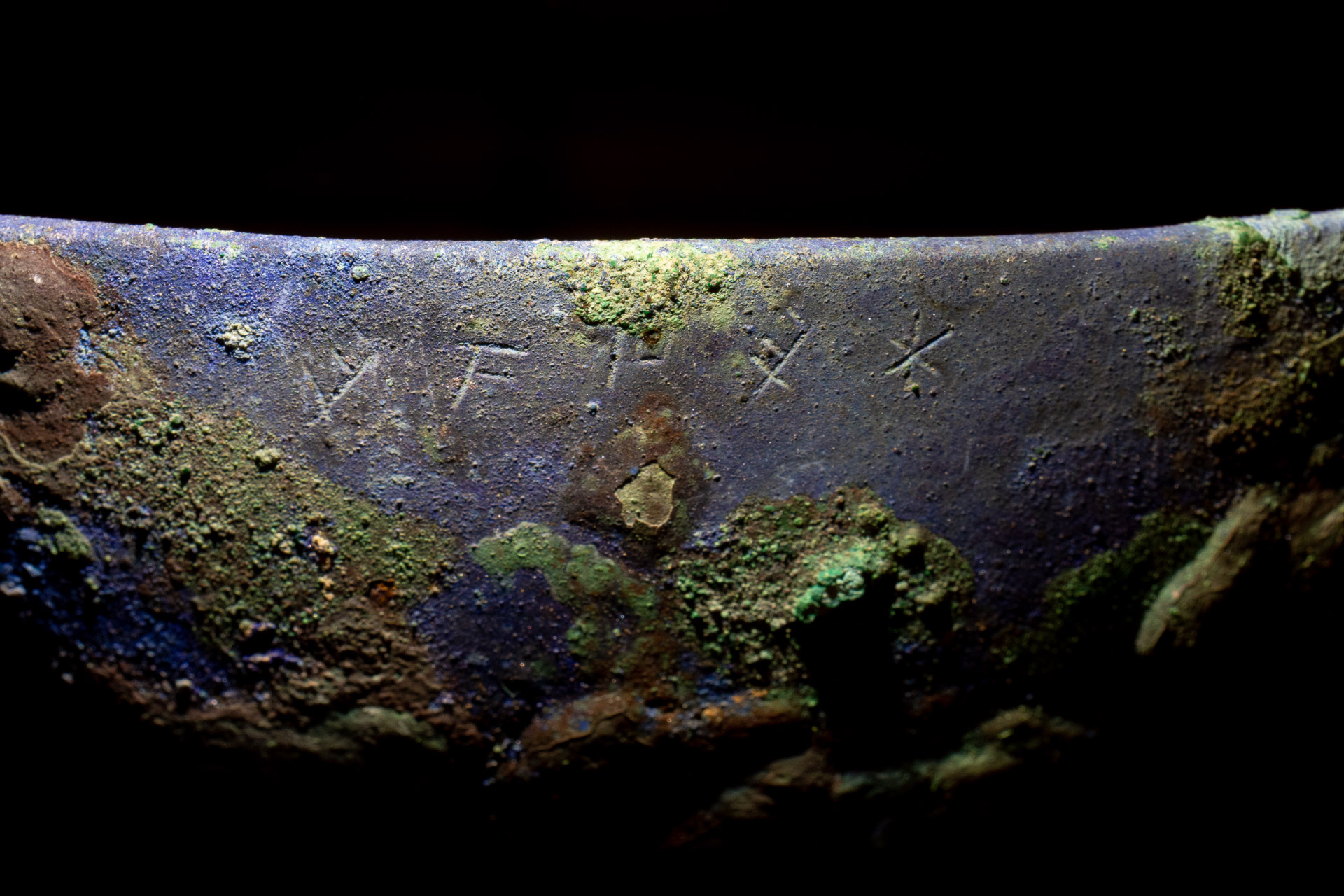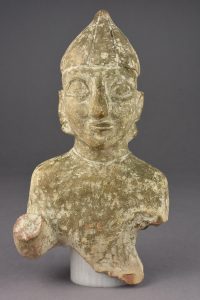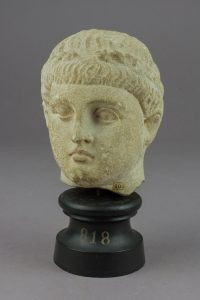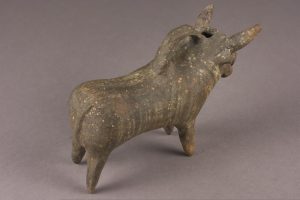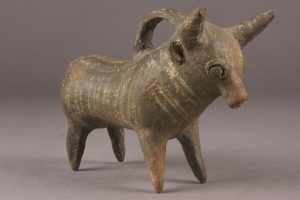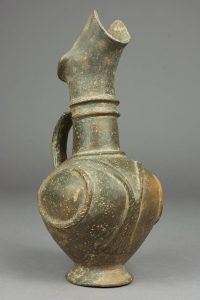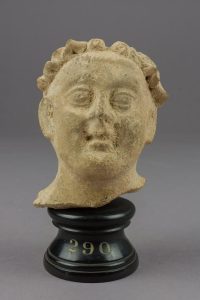On these pages you will find a detailed insight into our collection in the future. We are working on giving you the opportunity to do your own research and to enter into a professional exchange with you.
In the meantime please use our visualizations on sketchfab.com .
Collection Preview
Terracotta Torso of a Man
- ca. 650–560 B.C.
- Handmade torso of a man made of terracotta. The shoulders drop slightly outwards. The right arm is raised, the left is not preserved. The head bears the leaf-shaped eyes and the mouth consists of two horizontal lips. The nose is elongated and has no nostrils. The ears are large and flat against the head. The hair falls down in a compact mass on the sides of the neck. Soft vertically segmented helmet with upper end in three falling back to tassels.
- height: 27,7cm
- 3D visualization
Limestone head of a man
- ca. 30 B.C. – 330 A.D.
- Limestone head of a young man. Broken at the neck. Stylized curls shape the hairstyle. Leaf wreath enclosing from the back to the front. The ears are worked out. Round, straight mouth with slightly curved lips. Short nose with elaborated nostrils. Round almond-shaped eyes with shaped eyelids.
- height: 12,7 cm
- 3D visualization
Bull-shaped Rython
- ca. 1450–1200 B.C.
- Hollow cylindrical body with tubular spout. The filler opening is located on the front handle. The bull has four short legs, two horns with attached ears. The eyes are formed from rings with inlaid round discs. The tail of the bull is prepared as a slightly raised ridge. The rythos is painted with bright, almost white stripes in contrast to the dark, shiny material of the vessel body.
- length: 14,8 cm
- 3D visualization
Jug of the Base-Ring I Ware
- 1600–1450 B.C.
- The body of the jug is apple-shaped with a concave foot, whereas the round neck ends in a wide open spout. The handle attaches to the upper shoulder of the body and runs away from the neck and bends almost horizontally onto the upper neck. As is typical of the style, the vessel is covered with several ridged bands, which are scratched so that they are imitating the shape of ropes. The split band forms a pattern and ends in loops. Another loop wraps around the base of the neck and runs loose towards the back. Two more straps span the neck at the point where the handle starts. The handle itself has two lips on its sides.
- height: 27,8 cm
- 3D visualization
Terracotta Head of a so-called „Temple boy“
- ca. 220–30 B.C.
- A head of a so-called “temple boy” from the temple of Apollon Hylates near Curium in southern Cyprus. The figure was hollow and is broken at the base of the neck. The body has not been preserved. The face is round and has a broad nose, almond-shaped eyes with elaborate eyelids and a narrow, slightly recessed mouth. The hairline is visualized by a wreath of leaves. The back of the head is worked out smoothly.
- height: 10,6 cm
- 3D visualization
